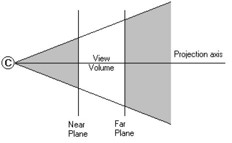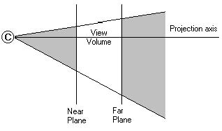First, let’s review some basic concepts. If you are familiar with camera projection and the view frustum, you can skip this part.

Among other things, a camera is defined by its axis of projection and its view volume. This means that all points lying inside the volume will be projected along the axis of projection. Let’s only consider the perspective camera. If the view volume is represented by a pyramid (what we call the frustum) whose apex is the camera lens, then the further from the camera the more points will be projected, creating the perspective effect.

What is important to remember here is that although the projection axis and the view frustum work together, they are not dependent on each other. This means that the projection axis is not necessarily right in the middle of the view volume. Therefore, by keeping the axis of projection fixed and reorienting the view frustum, the view volume is modified, allowing different parts of the scene to be displayed with some specific characteristics.
This is called an asymmetric frustum. What is interesting is that even if different parts of the scene are displayed as compared with the symmetric frustum, both the symmetric and the asymmetric frustums have the same axis of projection, and therefore, each point contained in both volumes will be projected the same in both cases. Which means that the z-order is respected as well as the size of a shape.
![[Important]](../images/important.jpg) | |
Open Inventor’s viewing model is designed for ease of use and does not allow explicit specification of an asymmetric frustum. An asymmetric frustum is used when an Open Inventor camera is put in stereo mode (specified to be a left or right eye view). |